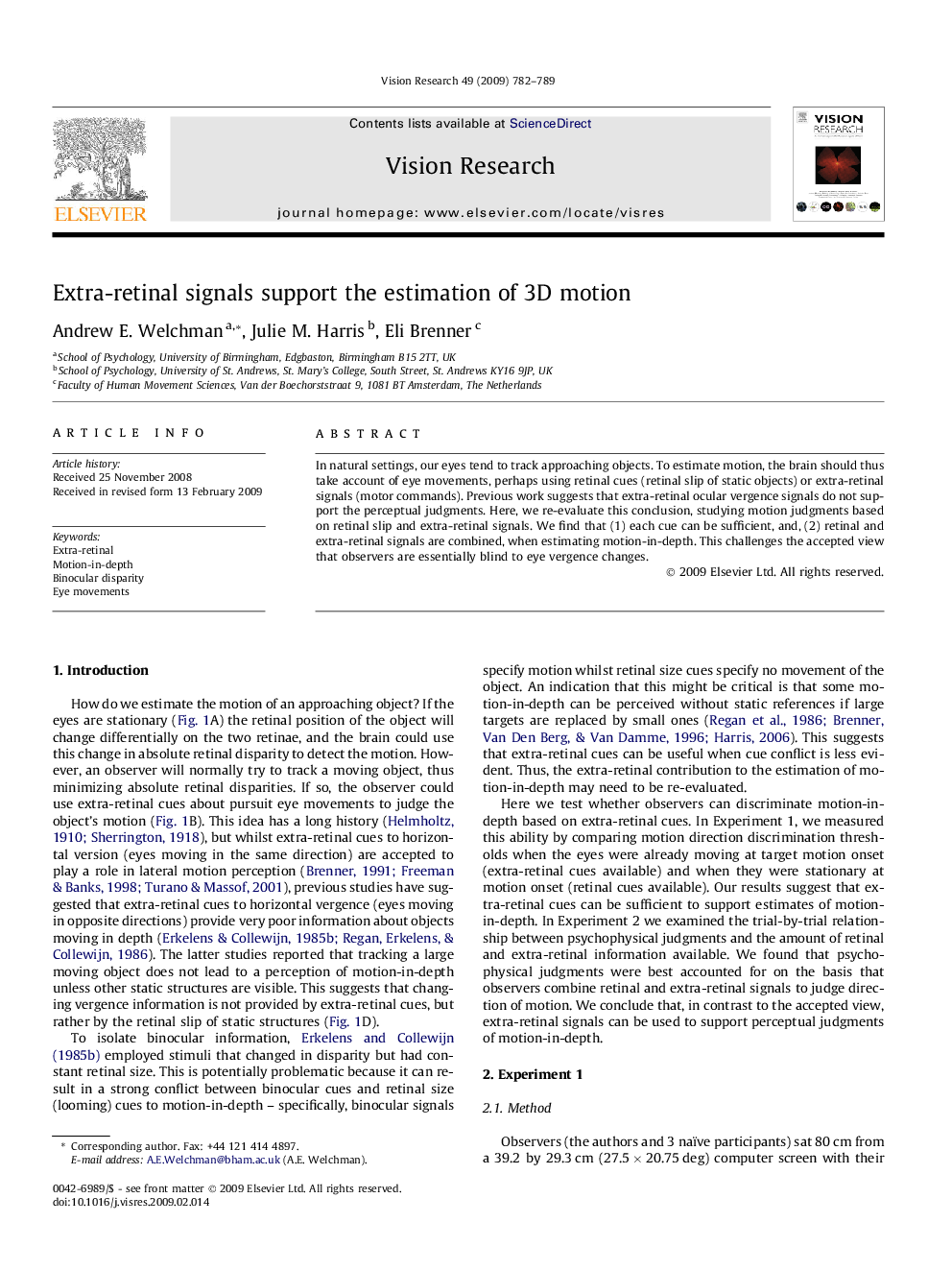| Article ID | Journal | Published Year | Pages | File Type |
|---|---|---|---|---|
| 4034744 | Vision Research | 2009 | 8 Pages |
Abstract
In natural settings, our eyes tend to track approaching objects. To estimate motion, the brain should thus take account of eye movements, perhaps using retinal cues (retinal slip of static objects) or extra-retinal signals (motor commands). Previous work suggests that extra-retinal ocular vergence signals do not support the perceptual judgments. Here, we re-evaluate this conclusion, studying motion judgments based on retinal slip and extra-retinal signals. We find that (1) each cue can be sufficient, and, (2) retinal and extra-retinal signals are combined, when estimating motion-in-depth. This challenges the accepted view that observers are essentially blind to eye vergence changes.
Related Topics
Life Sciences
Neuroscience
Sensory Systems
Authors
Andrew E. Welchman, Julie M. Harris, Eli Brenner,
